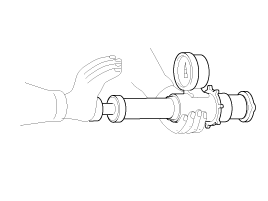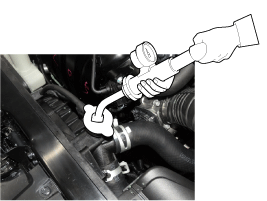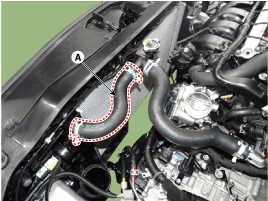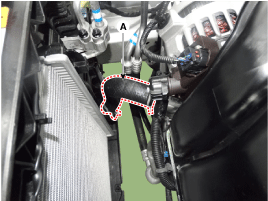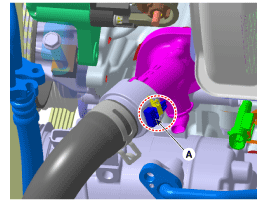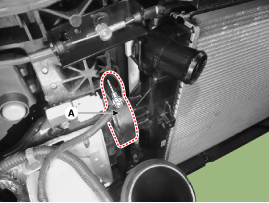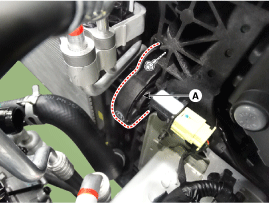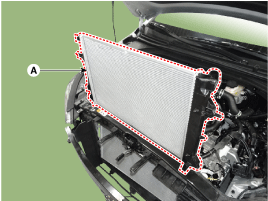Hyundai Elantra: Cooling System / Radiator Repair procedures
Hyundai Elantra AD (2016-2020) Service Manual / Engine Mechanical System / Cooling System / Radiator Repair procedures
| Inspection |
Radiator Cap Testing
| 1. |
Remove the radiator cap, wet its seal with engine coolant, and then install it on a pressure tester.
|
| 2. |
Apply a pressure of 93.16 ~ 122.58 kPa (0.95 ~ 1.25 kgf/cm?, 13.51 ~ 17.78 psi). |
| 3. |
Check for a drop in pressure. |
| 4. |
If the pressure drops, replace the cap. |
Radiator Leakage Test
| 1. |
Wait until engine is cool, then carefully remove the radiator
cap and fill the radiator with engine coolant, then install it on the
pressure tester. |
| 2. |
Apply a pressure tester to the radiator and apply a pressure of 93.16 ~ 122.58kpa (0.95 ~ 1.25kg/cm?, 13.51 ~ 17.78psi).
|
| 3. |
Inspect for engine coolant leaks and a drop in pressure. |
| 4. |
Remove the tester and reinstall the radiator cap.
|
| Removal and Installation |
| 1. |
Drain the coolant.
(Refer to Cooling System - "Coolant") |
| 2. |
Remove the cooling fan.
(Refer to Cooling System - "Cooling Fan") |
| 3. |
Remove the radiator upper hose (A).
|
| 4. |
Remove the Radiator lower hose quick connector (A).
|
| 5. |
Remove the front bumper cover.
(Refer to Body - "Front Bumper Cover") |
| 6. |
Remove the radiator upper mounting brackets (A).
[LH]
[RH]
|
| 7. |
Remove the resonator.
(Refer to Intake And Exhaust System - “Air Cleaner”) |
| 8. |
Remove the A/C condenser from the radiator assembly. |
| 9. |
Remove the radiator assembly (A) from the vehicle.
|
| 10. |
Install in the reverse order of removal. |
| 11. |
Fill the radiator with coolant and check for leaks.
(Refer to Cooling System - "Coolant")
|
 Radiator Components and Components Location
Radiator Components and Components Location
Components
1. Radiator assembly2. Radiator upper mounting bracket3. Mounting insulator4. Radiator lower hose quick connector 5. Radiator upper hose6. Filler neck assembly
...
 Water Temperature Control Assembly Components and Components Location
Water Temperature Control Assembly Components and Components Location
Components
1. Water temperature control assembly2. Engine coolant temperature sensor3. Throttle body coolant hose (if equipped)
...
Other information:
Hyundai Elantra AD (2016-2020) Owners Manual: Tires and Wheels
WARNING
Tire failure may cause loss of vehicle control resulting in an accident. To
reduce risk of SERIOUS INJURY or DEATH, take the following precautions:
Inspect your tires monthly for proper inflation as well as wear and damage.
The recommended cold tire pressure for your vehicle can be ...
Hyundai Elantra AD (2016-2020) Service Manual: Variable Charge Motion Actuator (VCMA) Specifications
Specification
Motor
ItemSpecificationCoil Resistance (?)3.4 ~ 4.4 [20°C(68°F)]
Position sensor
ItemSpecificationCoil Resistance (k?)3.44 ~ 5.16 [20°C(68°F)]
...
© 2018-2025 www.helantraad.com

